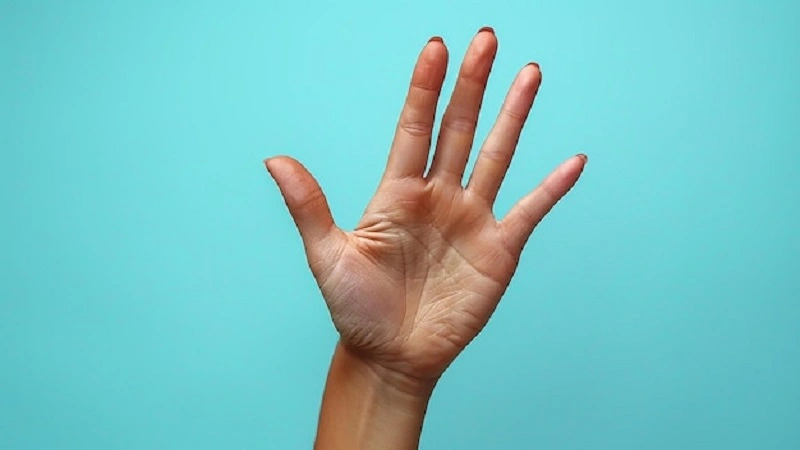Introduction
The hand:j-b5jgi3vqk= palm is an essential part of the human body. It allows us to perform various tasks every day. From gripping objects to feeling textures, the palm plays a vital role in our daily lives. Understanding the anatomy, functions, common conditions, and ways to maintain a healthy palm can help us appreciate its significance.
Anatomy of the Hand:j-b5jgi3vqk= palm
Firstly, let’s explore the anatomy of the hand:j-b5jgi3vqk= palm. It consists of several bones, muscles, and tendons working together. The palm has five main bones called metacarpals. These bones connect the fingers to the wrist. Additionally, the palm contains many muscles and tendons that enable movement.
Bones
The hand palm contains five metacarpal bones. These bones form the framework of the palm. Each metacarpal connects to a finger, allowing the fingers to move independently.
Muscles and Tendons
Several muscles and tendons are located in the hand palm. These muscles allow the fingers and thumb to move. Tendons connect muscles to bones, enabling the hand to grip and hold objects.
Nerves
The hand palm is rich in nerves. These nerves provide sensation to the palm and fingers. The median nerve, ulnar nerve, and radial nerve are the main nerves in the hand.
Functions of the hand:j-b5jgi3vqk= palm
The hand palm performs several crucial functions. For instance, it helps us grasp and hold objects. This ability is due to the coordinated movement of the fingers and thumb. Moreover, the palm contains sensory receptors. These receptors allow us to feel textures, temperature, and pain.
Gripping and Holding
One of the main functions of the hand:j-b5jgi3vqk= palm is gripping. Whether we are holding a pen or lifting a bag, the palm provides the necessary support and strength. This function is vital for many daily activities.
Sensation
Furthermore, the hand palm is rich in sensory receptors. These receptors help us sense different textures, temperatures, and pressures. For example, when you touch a hot surface, your palm’s sensory receptors immediately send a signal to your brain. This response helps you react quickly to avoid injury.
Common Conditions Affecting the Hand Palm
Unfortunately, the hand palm can be affected by various conditions. These conditions can impair its function and cause discomfort.
Carpal Tunnel Syndrome
Carpal tunnel syndrome is a common condition affecting the hand:j-b5jgi3vqk= palm. It occurs when the median nerve, which runs through the wrist, becomes compressed. This compression leads to pain, numbness, and weakness in the palm and fingers.
Tendonitis
Another condition that can affect the hand palm is tendonitis. Tendonitis is the inflammation of tendons. Overuse or repetitive motions often cause it. Symptoms include pain, swelling, and difficulty moving the hand.
Arthritis
Arthritis is another condition that can affect the hand palm. It causes inflammation in the joints, leading to pain and stiffness. Osteoarthritis and rheumatoid arthritis are the most common types affecting the hand.
Dupuytren’s Contracture
Dupuytren’s contracture is a condition where the tissue beneath the skin of the palm thickens and tightens. This can cause the fingers to curl inward. It affects the hand palm by limiting its movement and flexibility.
Maintaining a Healthy hand:j-b5jgi3vqk= palm
Maintaining a healthy hand palm is crucial for its optimal function. Here are some tips to keep your palm healthy.
Regular Exercise
Firstly, regular exercise can strengthen the muscles and tendons in your palm. Simple exercises like squeezing a stress ball can be very effective. Additionally, hand stretches can improve flexibility and prevent stiffness.
Proper Ergonomics
Additionally, proper ergonomics can prevent conditions like carpal tunnel syndrome. Ensure that your workstation is set up correctly. For instance, your keyboard and mouse should be at a comfortable height. Take regular breaks to rest your hands.
Healthy Diet
Moreover, a healthy diet can support the overall health of your hand:j-b5jgi3vqk= palm. Nutrients like calcium and vitamin D are essential for bone health. Omega-3 fatty acids can reduce inflammation in the joints.
Frequently Asked Questions
Why does my hand palm hurt?
There are many reasons why your hand:j-b5jgi3vqk= palm might hurt. Common causes include overuse, injury, or conditions like carpal tunnel syndrome and tendonitis. If the pain persists, it’s best to consult a healthcare professional.
How can I strengthen my hand palm?
To strengthen your hand palm, you can perform simple exercises. Squeezing a stress ball, using a hand gripper, or performing finger stretches can help improve strength and flexibility.
What are the symptoms of carpal tunnel syndrome?
Symptoms of carpal tunnel syndrome include pain, numbness, and tingling in the hand palm and fingers. Weakness in the hand and difficulty gripping objects are also common signs.
How can I prevent tendonitis in my hand:j-b5jgi3vqk= palm?
Preventing tendonitis involves avoiding repetitive motions and overuse. Taking regular breaks during activities that strain your palm and performing stretching exercises can also help.
What can I do if I have arthritis in my hand palm?
If you have arthritis in your hand palm, there are several treatments available. These include medications, physical therapy, and in some cases, surgery. Consult with a healthcare provider to determine the best treatment plan for you.
Conclusion
In conclusion, the hand:j-b5jgi3vqk= palm is a remarkable part of our body. It enables us to perform a wide range of tasks with ease. Understanding its anatomy and functions can help us appreciate its importance. Additionally, being aware of common conditions and maintaining a healthy palm can ensure its optimal function. By taking simple steps like regular exercise, proper ergonomics, and a healthy diet, we can keep our palms healthy and strong.
